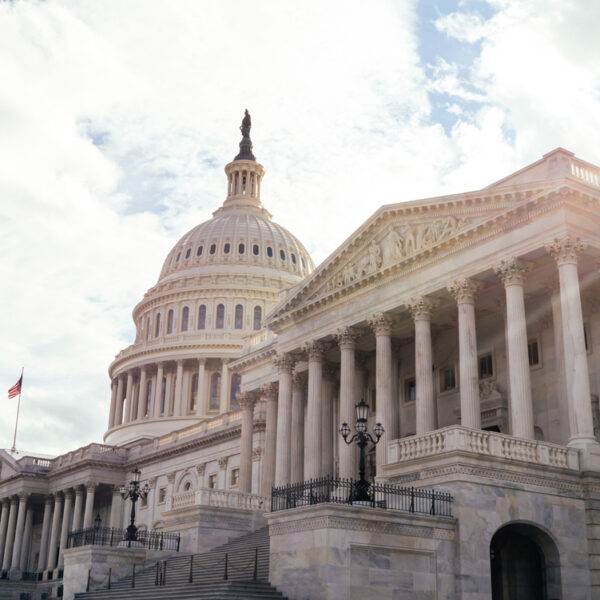The recently-passed CARES Act includes financial support for housing and homeless organizations through several pots of money, which include:
- $12 billion for the Department of Housing and Urban Development (HUD) specifically for housing and homeless programs.
- $150 billion directly to states and local governments through the Coronavirus Relief Fund
- $45 billion through FEMA’s Disaster Relief Fund.
Financial support is also available to nonprofit organizations through the Small Business Administration. An overview of these funds are provided below. All timelines noted are based on enactment of the legislation on March 27, 2020.
$4B in Emergency Solutions Grants (ESG)
Who will administer it?
The Department of Housing and Urban Development through states and local governments
When will it be distributed?
HUD will distribute Emergency Solutions Grants (ESG) funds in two waves using the FY20 ESG formula:
- The first wave will be released within 30 days
- The second wave will be released within 90 days
How will amounts be allocated?
Funding will be distributed in two waves.
- In the first wave up to $2 billion will be released. Starting the first week of April, HUD will distribute $1 billion to states and local governments through the ESG program this week. This funding will be available to Continuum of Care (CoCs) Programs through their lead agencies. We encourage CoCs to reach out to their lead agency to inquire about the funds and disbursement.
- In the second wave HUD will distribute the remainder of the $4 billion to state and local governments based on a new formula developed by HUD that factors how states and communities have been impacted by the coronavirus pandemic. This formula is still being developed by HUD.
What can this be used for?
The CARES Act funding is designed to be very flexible so state, tribal, and local governments can respond to the needs of their communities.
ESG funds can be used for a wide range of activities and services performed, including street outreach, creating and operating emergency shelters, providing essential and supportive services, homelessness prevention, rapid re-housing assistance, HMIS, and other administrative costs.
Other resources?
$5B in Community Development Block Grants (CDBG)
Who will administer it?
The Department of Housing and Urban Development through states and local governments
When will it be distributed?
HUD will distribute Community Development Block Grants (CDBG) funding in two waves.
- The first wave will be released within 30 days
- The second wave will be released within 45 days
How will amounts be allocated?
- HUD will distribute $2 billion to states and local governments using the FY20 CDBG formula within 30 days.
- In the second wave, HUD will distribute $1 billion directly to states and territories based on various factors such as public health needs, transmission rates, number of coronavirus cases, and economic and housing market factors. HUD will distribute the remaining $2 billion to state and local governments based on the impact of the coronavirus on the health and economic sectors. Guidance is being developed.
What can this be used for?
Typically CDBG funding is reserved for buildings and capital improvements. However, the funding in the CARES Act is very flexible and can be used for most activities with a “public benefit” like addressing homelessness, housing capitol, rent subsidies, etc.
Some other examples include:
- construct a facility for testing, diagnosis, or treatment
- rehabilitate a community facility to establish an health clinic
- rehabilitate a commercial building or closed school building to establish an infectious disease treatment clinic, e.g., by replacing the HVAC system
- acquire and quickly rehabilitate a motel or hotel building to expand capacity of hospitals to accommodate isolation of patients during recovery
- make interim improvements to private properties to enable an individual patient to remain quarantined on a temporary basis
Additional guidance from HUD is forth-coming.
Other resources?
- More information is provided in this Quick Guide to CDBG Eligible Activities to Support Infectious Disease Response.
$45B for FEMA’s Disaster Relief Fund
Who will administer it?
Federal Emergency Management Association through states and local governments
When will it be distributed?
On a rolling basis
How will amounts be allocated?
State, tribes, and local governments can apply for these funds
What can this be used for?
FEMA’s Disaster Relief Fund serves as the primary source of funding for FEMA disaster recovery programs, including direct assistance to states, municipalities, and tribes, as well as Public Assistance (PA), Individual Assistance (IA), the Disaster Unemployment Program, and more. This includes an additional $200 million for FEMA’s Emergency Food and Shelter Program which provides shelter, food, and supportive services through community organizations.
$150B for the Coronavirus Relief Fund
Who will administer it?
The Treasury Department to state, tribal, and local governments
When will it be distributed?
Within 30 days states, tribal, and local governments will receive direct payments
How will amounts be allocated?
- The disbursement of funds is based on population, with each state receiving at least $1.25 billion. The most populous states, like California and Texas, will receive over $10 billion and the District of Columbia will receive about $500 million.
- Tribal governments will receive $8 billion
- Local governments serving populations over 500,000 will receive a portion of the funding
What can this be used for?
These funds can be used for costs incurred between March 1 – December 30, 2020 due to the pandemic, which are not covered in their enacted budgets.
Small Business Loans for Nonprofits
Who will administer it?
Small Business Administration directly to impacted organizations and businesses
When will it be distributed?
On a rolling basis
How will amounts be allocated?
Two types of assistance are available through the SBA for nonprofits:
- The Disaster Assistance Program or Economic Injury Disaster Loan (EIDL) Program provides low-interest loans to nonprofits of all sizes. Nonprofit organizations can secure loans of up to $2 million to be used to pay payroll, accounts payable, debts, and other bills that can’t be paid due the impact of COVID-19; the interest rate for nonprofits is 2.75%. The CARES Act expands this program to include an emergency advance, pending a loan application, of up to $10,000 that the SBA must distribute to the nonprofit within three days. The COVID-19 EIDL application is here.
- The 7(A) or Paycheck Protection Program (PPP) provides loans of up to $10 million to organizations with less than 500 employees. These loans can cover expenses incurred between February 15 – June 30, 2020, for payroll, health benefits, rent, interest on mortgages, utilities, and fixed debts. Interest rates are capped at 4%, but portions of the loan (payroll, rent, interest on mortgages, and utilities) can be forgiven, turning the loan into a grant. The amount forgiven, up to 100%, depends on the extent to which the nonprofit retains employees through June 30. A sample application is available here; an online application is not yet available.
Other resources?
- We encourage impacted organizations to contact your local Small Business Development Centers to get information about these loans, how to apply, and what documentation you’ll need to provide.
- The National Council of Nonprofits has additional resources, including this helpful chart that outlines the eligibility for each program. Some states are also providing additional relief and financial support. Check your state’s economic, workforce, or labor agency’s websites.
CARES Act Funding Breakdown.
The CARES Act includes an injection of funds for multiple federal departments and projects. Below is an overview of how those monies are allocated to programs directly impacting those experiencing homelessness and homeless service providers. You can read more here.
Flexible funding
- $30B in Disaster Relief Funds, which can be used by state and tribal governments to fund emergency-service providers, including private nonprofits providing critical and essential services (like food and shelter).
- $150B for the Coronavirus Relief Funds, which can be used as flexible funds for state, tribal, and local governments (allocated by state population).
Housing and homeless-focused funding
Department of Housing and Urban Development (HUD) – $12.4B
- $4B in Emergency Solutions Grants to assist homeless shelters and outreach workers who keep people who are homeless safer from coronavirus
- $5B in Community Development Block Grant (which can be used for rental assistance)
- $1.25B in Tenant-Based Rental Assistance
- $685M Public Housing Operating Fund
- $1B in Project Based Rental Assistance
- $300M in Native Americans Programs
- $65M for Housing Opportunities for Persons With AIDS (HOPWA)
- $2.5M for additional Fair Housing enforcement
- $50M for Section 202 Housing for the Elderly
- $15M for Seniors particularly at risk from the coronavirus
Other housing programs and provisions
- $900M for Low Income Home Energy Assistance Program
- $25M for Runaway and Homeless Youth Programs
- $100M for SAMHSA Emergency Response Grants, to provide flexible funding to address mental health, substance use disorders, and provide resources and support to youth and the homeless
- Also provides a moratorium on foreclosures for all federally-backed mortgages, foreclosure forbearance, and eviction protections.
Economic assistance
- Cash payments to Americans – $1200/adult and $500/child
- Payments are reduced for individuals making over $75,000 annually and none for over $90,000
- Checks aren’t expected to be sent until May (at the earliest)
- Tax payments delayed for individuals and businesses until July (subject to limitations)
- Including payroll tax deferral
- Loans to small businesses with forgiveness of the portions used for payroll, rent, and/or mortgage for businesses that keep employees on payroll
- $500B of loans and loan guarantees for businesses impacted by COVID-19
- New Inspector General at Treasury and special Congressional Oversight Committee to monitor these loans
- Businesses owned by Trump, Pence, other members of the Administration, and Members of Congress are not eligible for loans
- Extension and expansion of unemployment insurance to laid-off workers (including non-traditional and gig workers)
- Payments on federal student loans suspended for up to six months (without incurring additional interest)




